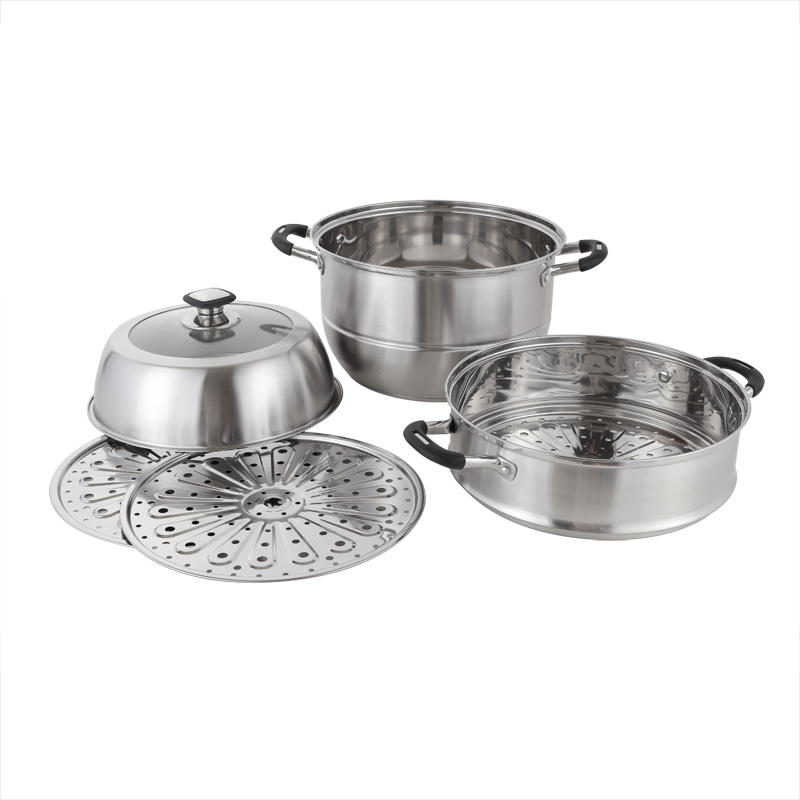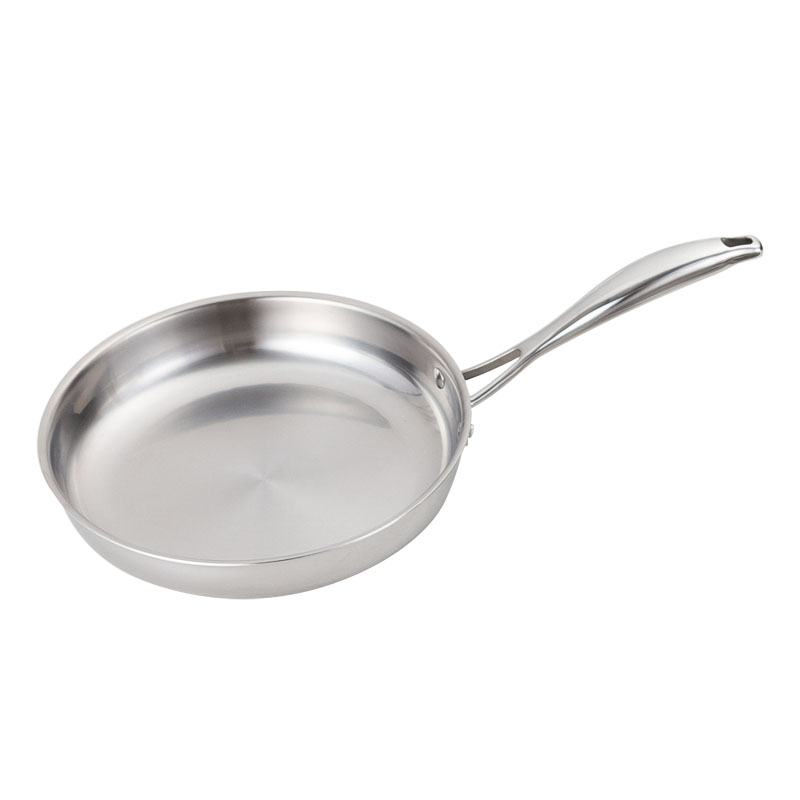Today I am happy to introduce you to the start of a series of posts here on the blog. In the coming weeks I will introduce you to the most popular materials for cooking pots, pans and other cookware in four posts. I will present the respective advantages and disadvantages of the specific materials and show you what you need to look out for when buying. It will also be about why there are so many different materials, what their special features and peculiarities are and, above all, when you need which material. Today we start with what is probably the most widespread material in the kitchen: stainless steel. The articles on copper, enamel and cast iron will follow in the coming weeks. I am happy!
What is stainless steel?
Stainless steel refers to all metallic alloys whose main component is iron and which also have a special degree of purity. Many types of stainless steel contain, for example, nickel or chromium in addition to iron. Stainless steel is often rust-free.
What does the designation 18/10 mean on pots?
Almost all stainless steel products you find in your kitchen will be embossed with “18/10”. This is a designation for the alloy X5CrNi18-10 and the world’s most commonly produced stainless steel. The numbers 18/10 designate the proportion of chromium (18%) and nickel (10%). A pretty sober name so ![]() .
.
In 2016 almost 46 million tons of stainless steel were produced worldwide. This corresponds to the mass of about 10 million adult Asian elephants
What special properties does stainless steel have?
There are hundreds of different stainless steels. These differ in their composition. The basic component is always iron. In addition, depending on the requirements, a large number of other alloying elements are added. These are, for example, chromium, nickel, titanium, tungsten and many more. The special properties that a stainless steel has are strongly dependent on this composition. Even small differences in the exact composition can change the properties extremely.
Why is stainless steel a suitable material for pots, pans and the like?
Especially with regard to the use of stainless steel in the kitchen and for cooking, there are some properties that are particularly important and practical:
stainless
high resistance to corrosion and acids
largely non-magnetic
heat resistant
easy to clean
high taste and odor neutrality
When is the best time to use stainless steel pots?
Stainless steel pots are almost standard equipment in the kitchen. They can be used in a variety of ways and are basically suitable for all purposes, be it for cooking, heating or frying. Due to the high resistance to corrosion, stainless steel pots are typically used whenever “cooking” is required. This can be the pasta water, a soup or the decoction of potatoes. Searing in stainless steel pots is also possible, but requires a little more practice. As a rule, you limit yourself to sweating onions, for example, before further work steps follow.
I heard stainless steel is a pretty bad conductor of heat, is that true?
Compared to other materials such as copper or iron, stainless steel has a lower coefficient of thermal conductivity, i.e. it conducts heat less well. This means that stainless steel pots and pans take longer to transfer the heat to the inside of the pot or pan. On the other hand, the heat remains in the pot for longer.
Stainless steel expands when heated, so your pot or pan will expand by up to a millimeter as it cooks.
How do you care for stainless steel?
For common stains on stainless steel pots and pans, washing-up liquid and warm water are usually sufficient. If stubborn dirt cannot be removed with this, a cleaning milk or vinegar solution can be used. There are also special cleaning agents for stainless steel surfaces. Depending on the product, these leave a protective film on the stainless steel and should only be used on surfaces, not in pots or pans. Stainless steel pots can be cleaned in the dishwasher.
You should never do that with stainless steel
Danger! Stainless steel pots and pans should NEVER be cleaned with steel wool. There is a risk that the stainless steel will be damaged. This often leads to damaged areas, which then become visible as small rust spots. You should also avoid using scouring agents to avoid damaging and scratching the stainless steel.
In addition, stainless steel pots, pans, bowls or dishes have no place in the microwave!
Where else is stainless steel used?
In addition to the products already mentioned, such as crockery, sinks or brushed surfaces, stainless steel is used in a wide variety of ways. You can find it, for example, as a material for screws, in car construction, in medical technology, for surgical instruments, in swimming pool construction and much, much more. If you look around carefully during the day, you will notice how versatile stainless steel is used.
What do you have to look out for when buying stainless steel pots?
In general, when buying stainless steel pots, it is worth paying attention to the appropriate quality. Some clues to play it safe when buying can be:
The pots should have a clean finish and be able to be placed on a level surface without wobbling
the thicker the stainless steel layer of the pot, the better and more evenly the heat is distributed inside. This makes the pots much heavier and usually more expensive
are the handles insulated or do you have to wear appropriate cooking gloves when handling them?
Does the cooking pot size match the stove at home? Some manufacturers specify the diameter of the lid and not the surface of the pot
Make sure that the stainless steel pots are suitable for induction hobs
Post time: Nov-12-2022






